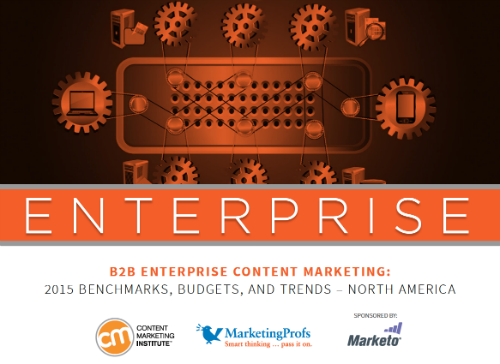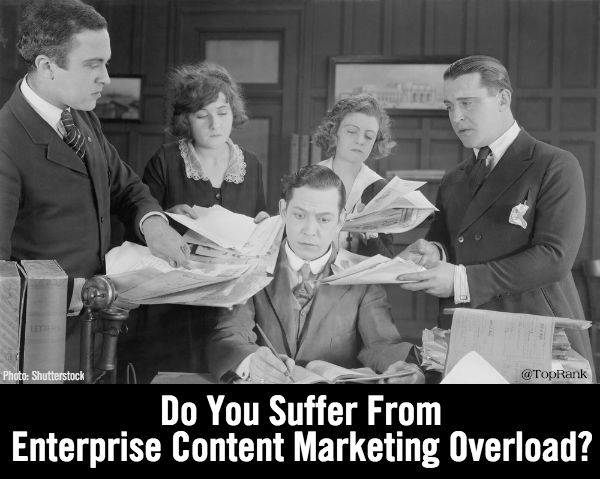
Companies in the B2B space from IBM to HubSpot have been actively and effectively engaging prospects with longer sales cycle content for years. Like many competitive environments, a lot of emphasis for marketers has been about creating “more” content. More blog posts, videos, infographics, social messages, emails, and so on.
But here’s the thing about “more content” when it comes to enterprise-sized organizations. There’s a nearly unmanageable degree of added complexity when you start involving a matrix of customer segments and buying journeys across different product offerings, company divisions and geographies. How are large, enterprise B2B marketers responding to this challenge? There’s a new report that sheds (some) light on that.
According to new research from Content Marketing Institute, MarketingProfs and Marketo (B2B Enterprise Content Marketing 2015) bigger companies use more tactics to target more audiences and have a more difficult time with overall effectiveness and measuring ROI – especially compared to small businesses and B2B content marketers overall.
According to the report, enterprise marketers are more challenged with nearly every aspect of content marketing when compared with B2B marketers overall. Last year 70% of marketers were creating more content and in this year’s report, 65% are creating more. But is more better?
CMI has changed definitions a bit and one of the interesting things about this year compared to last is that 88% of enterprise B2B marketers report using content marketing this year vs. 96% last year. Also, this year 28% report their organizations as effective with content marketing compared to 32% last year.
Is this a matter of changing definitions or simply that companies are beginning to learn more about what they don’t know?
The devil is in the details:
Strategy: 69% of enterprise B2B marketers do not have a documented content marketing strategy. 42% have a strategy, but it is not documented. 20% have no content marketing strategy at all.
Goals: Top goals for content marketing include brand awareness, engagement and sales.
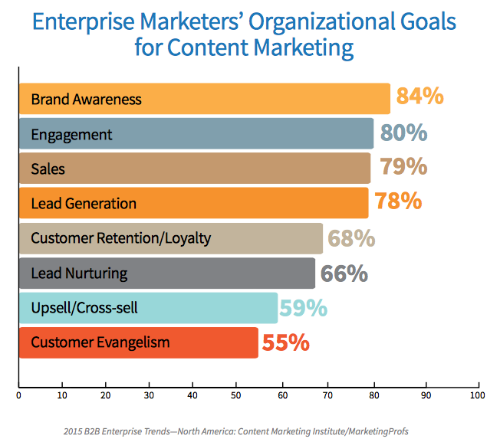
Audiences: 28% of enterprise B2B marketers are targeting 7 or more more distinct target audiences. The average is 6.
Tactics: In-person events, videos and social media (other thank blogs) rated most popular content marketing tactics. But social media was nowhere to be found on the list of most effective tactics, which included in-person events, videos, research reports, case studies, webinars, white papers, blogs, microsites, articles, newsletters, infographics and branded content tools.
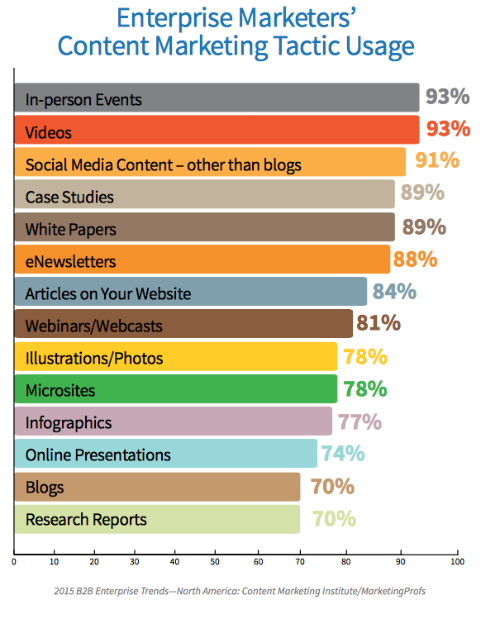
Promotion: The most effective paid content promotion tactics included pay per click SEM, content discovery tools, promoted posts (tweets), social ads (LinkedIn ads), native advertising, banner ads, print promotion. Speaking of social networks and promotion, LinkedIn, Twitter, YouTube and Facebook all rated 80% or more for usage.
Effectiveness: Enterprise marketers are measuring content marketing success primarily by website traffic, higher conversion rates, and sales lead quality.
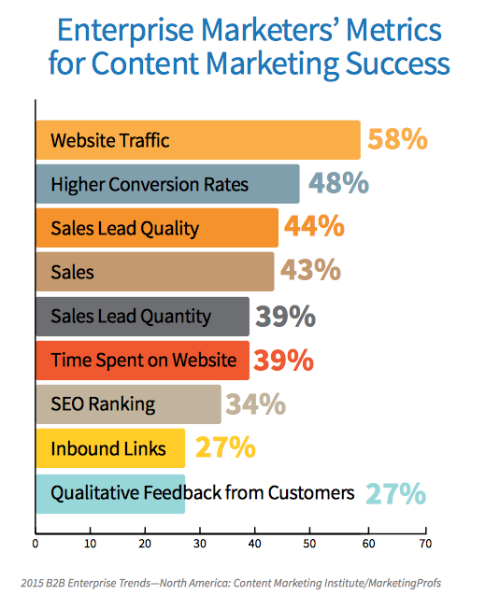
ROI: Less than half of enterprise B2B marketers are successful at tracking content marketing ROI. 31% are not successful or don’t track ROI at all.
While 65% of enterprise content marketers are creating more content, the majority are focused on creating more engaging, higher-quality content over the next 12 months. Some of the key areas of focus for enterprise B2B content marketers right now or over the next 12 months include:
- Organizing content on website
- Better understanding of audience
- Creating more engaging/higher-quality content
- Creating visual content
- Finding more/better ways to repurpose content
- Measuring content marketing ROI
- Content personalization
- Developing a documented content marketing strategy
- Better understanding of what content is effective—and what isn’t
- Content curation strategies
- Progressive profiling
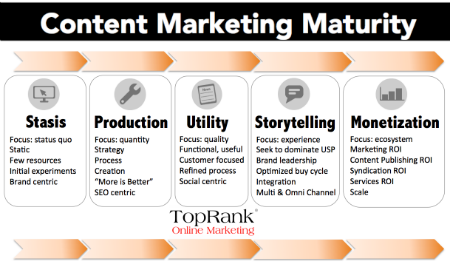
TopRank’s Content Marketing Maturity Model
I think the trend amongst enterprise B2B content marketers is consistent with the evolution we describe on our content marketing maturity model, especially in the transition from creating “more” content to creating more meaningful and productive content with refined processes and a focus on better customer experiences.
There’s no doubt enterprise companies deal with far more complexity in terms of distinct audiences, volume of tactics and scale of implementation. However, I think the more effective large companies become at defining a content marketing strategy and diligent about implementing it with goals and measurement, the better the reporting effectiveness and ROI will be.
Check out the full report on the CMI site where you’ll find:
- Which tactics, social media platforms, and paid advertising methods they use to distribute content—and which ones they find most effective
- The impact of a documented content marketing strategy on overall effectiveness
- The percentage of total budget they allocate to content marketing
- How their goals for content marketing have changed over the last year
- Which metrics they use to measure content marketing effectiveness
- Content marketing initiatives they’re working on
Disclosure: CMI, MarketingProfs and Marketo have are either current or past clients of TopRank Online Marketing.
Top photo: Shutterstock
